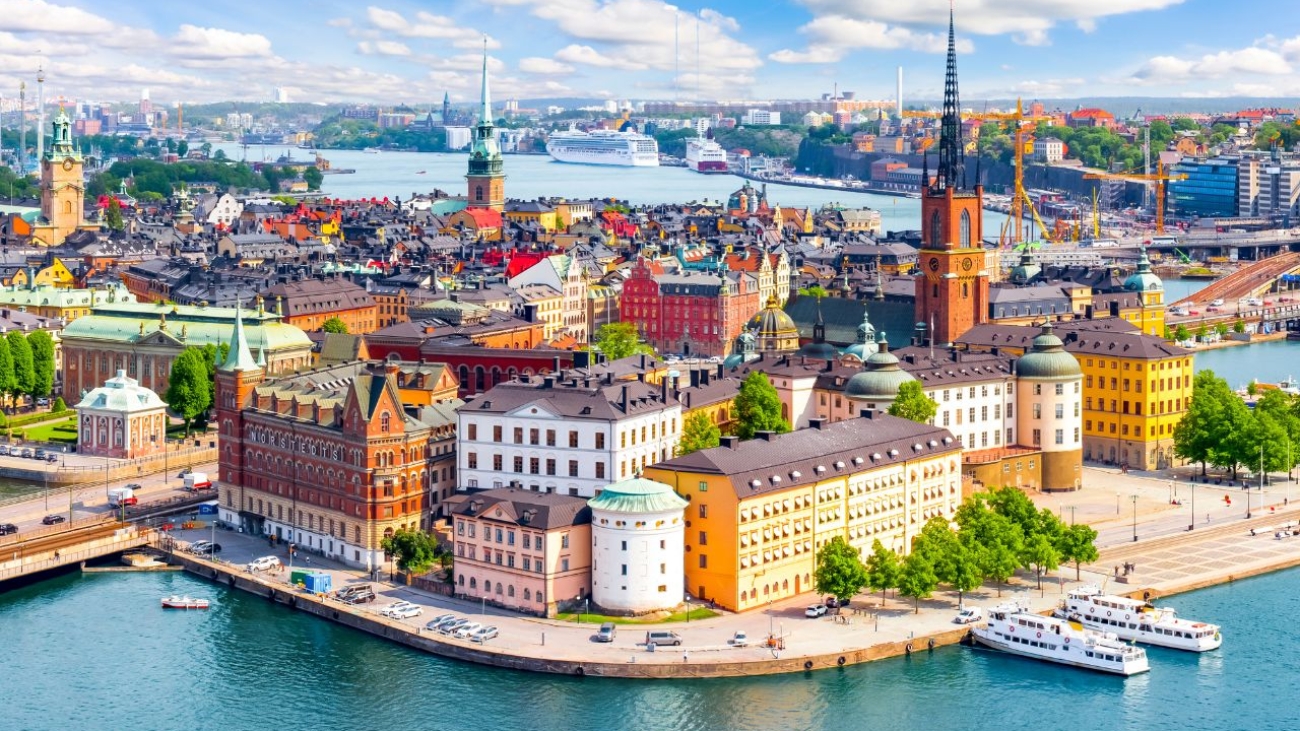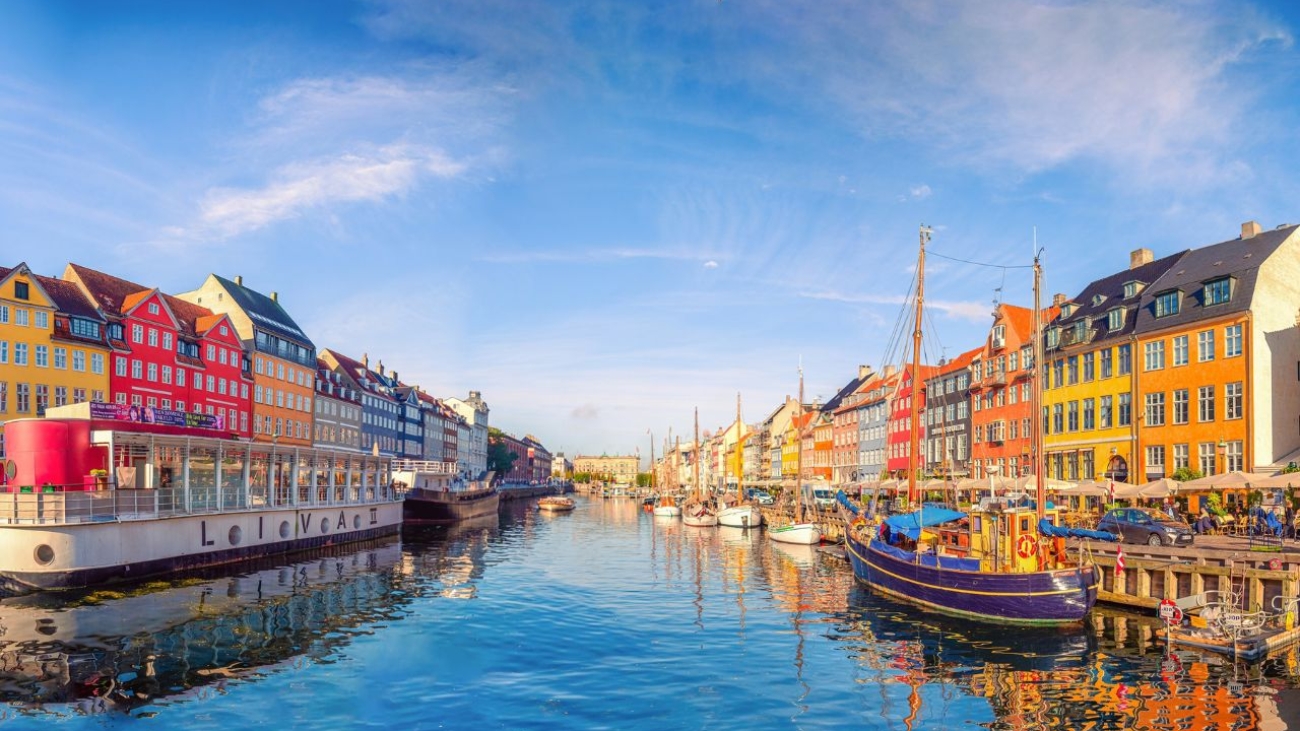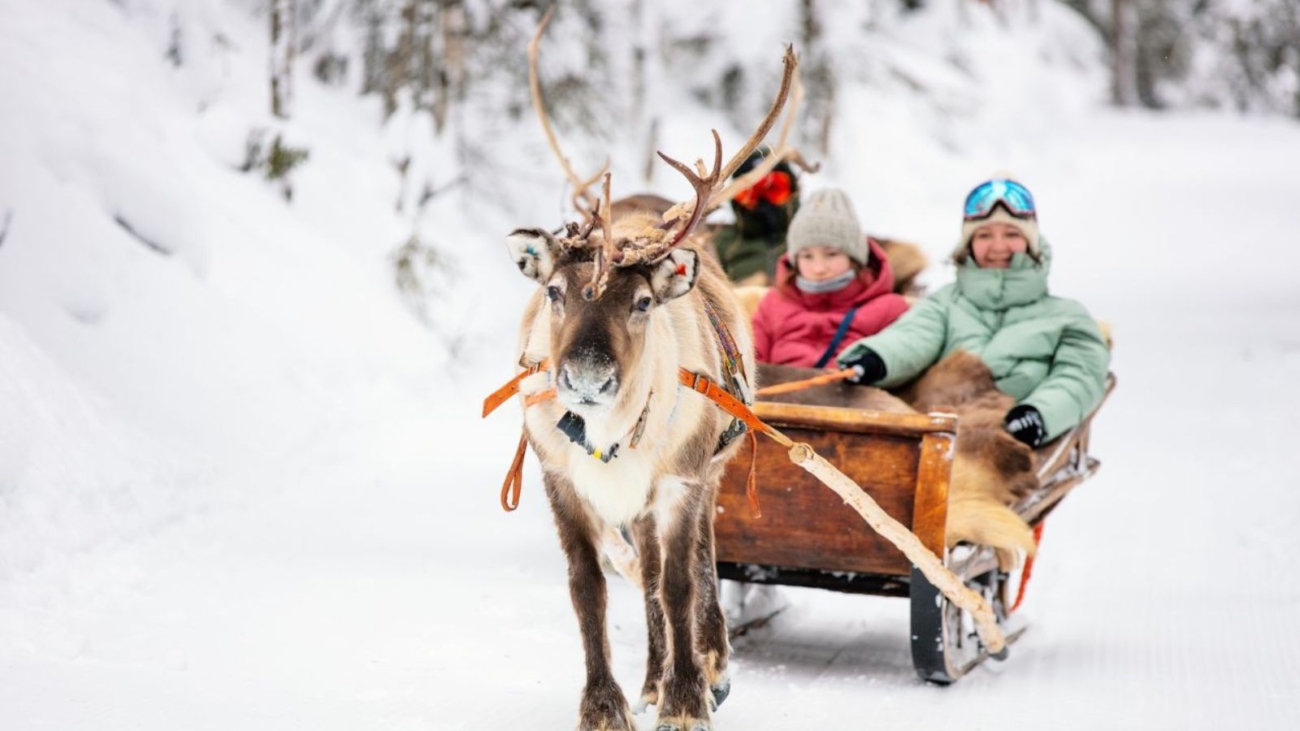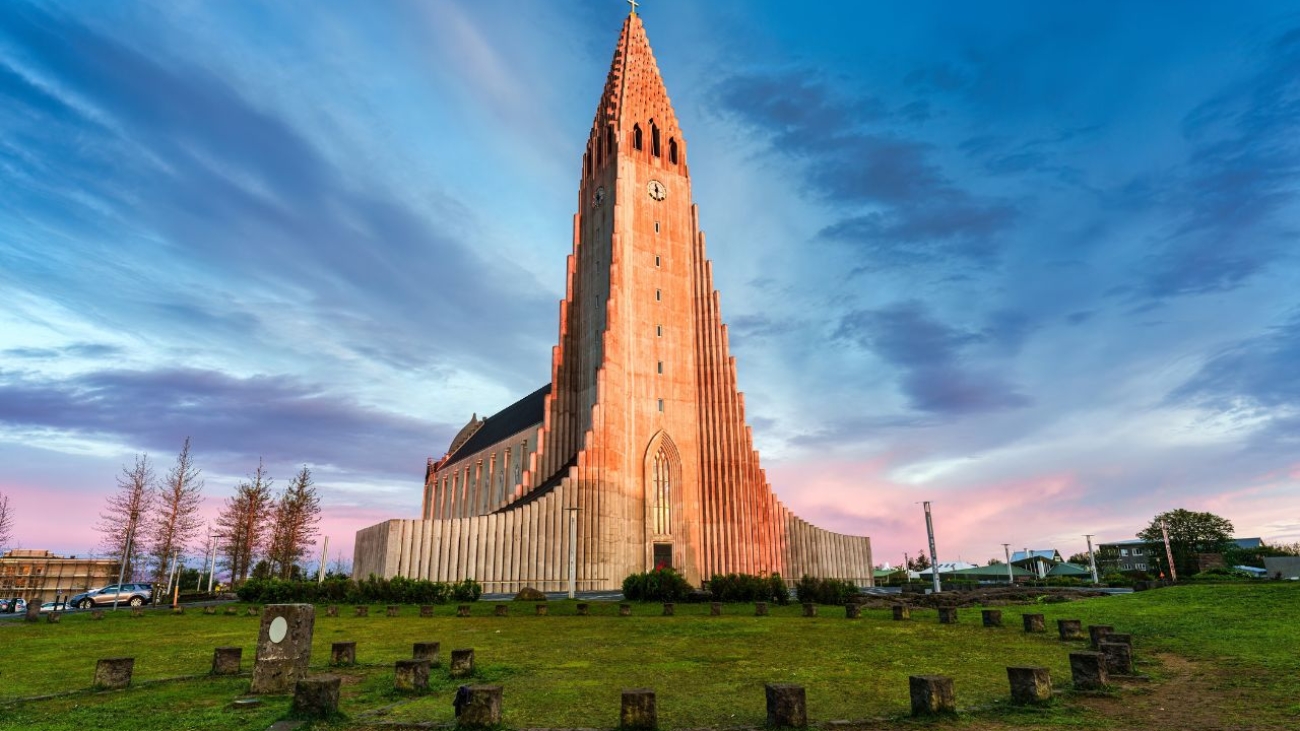Sweden, a land of stunning natural beauty, rich history, and vibrant cities, offers travellers a diverse range of experiences. From the bustling streets of Stockholm to the serene landscapes of Swedish Lapland, Sweden is a destination that promises unforgettable adventures. Whether you’re a culture enthusiast, nature lover, or history buff, there’s something for everyone in this Scandinavian gem. Here’s your ultimate guide to the best things to do in Sweden.
Top 10 Things to Do in Sweden
- Explore Stockholm: The Capital of Scandinavia
- Experience the Northern Lights in Swedish Lapland
- Visit the Medieval Town of Visby
- Discover the Swedish Archipelago
- Hike in Abisko National Park
- Tour the Royal Palaces of Sweden
- Relax in the Swedish Countryside
- Visit the Vasa Museum
- Enjoy the Winter Wonderland of Jukkasjärvi Ice Hotel
- Celebrate Midsummer in Sweden
1. Explore Stockholm: The Capital of Scandinavia
Stockholm, the capital of Sweden, is a city that seamlessly blends historic charm with modern innovation. Spread across 14 islands connected by over 50 bridges, Stockholm is often referred to as the “Venice of the North.”
- Gamla Stan: Begin your exploration in Gamla Stan, Stockholm’s Old Town. This well-preserved medieval district is a maze of cobblestone streets, colourful buildings, and historic sites. Visit the Royal Palace, one of the largest palaces in Europe, and don’t miss the chance to see the daily Changing of the Guard.
- Stockholm Archipelago: Just a short boat ride from the city, the Stockholm Archipelago consists of over 30,000 islands, each offering a unique experience. Whether you’re looking for a serene retreat or an outdoor adventure, the archipelago has something for everyone. Popular islands to visit include Vaxholm, Sandhamn, and Grinda.
- Vasa Museum: The Vasa Museum is home to the world’s only preserved 17th-century ship, the Vasa, which sank on its maiden voyage in 1628. The museum offers a fascinating insight into Sweden’s maritime history and the story of the Vasa’s recovery and preservation.
- Skansen Open-Air Museum: Skansen, located on Djurgården Island, is the world’s oldest open-air museum. It showcases Swedish life through the ages, with traditional buildings, costumed guides, and a zoo featuring native animals like moose and bears.
2. Experience the Northern Lights in Swedish Lapland
Swedish Lapland, located in the far north of the country, is a winter wonderland that offers some of the best opportunities to witness the Northern Lights, also known as the Aurora Borealis.
- Best Time to Visit: The Northern Lights are most visible between late September and early April. The long, dark nights of winter provide the perfect backdrop for this mesmerizing natural phenomenon.
- Top Locations: Abisko National Park is one of the best places in the world to see the Northern Lights. The park’s clear skies and minimal light pollution make it an ideal spot for aurora watching. Other popular locations in Swedish Lapland include Kiruna, Jokkmokk, and Luleå.
- Aurora Sky Station: Located in Abisko, the Aurora Sky Station is a dedicated Northern Lights viewing centre. Visitors can take a chairlift up to the station, where they can enjoy panoramic views of the night sky and, with luck, witness the aurora in all its glory.
3. Visit the Medieval Town of Visby
Visby, located on the island of Gotland in the Baltic Sea, is one of Sweden’s most picturesque towns. Known for its well-preserved medieval architecture, Visby is a UNESCO World Heritage Site and a popular destination for history enthusiasts.
- Medieval City Walls: Visby is encircled by a 3.5-kilometer-long wall, dating back to the 13th century. The wall is dotted with towers and gates, offering a glimpse into the town’s past as a major trading hub in the Hanseatic League.
- St. Mary’s Cathedral: St. Mary’s Cathedral is the only one of Visby’s 12 original medieval churches still in use today. The cathedral, built in the 12th century, is an architectural gem with beautiful stained glass windows and intricate stone carvings.
- Almedalen Park: Once the site of Visby’s medieval harbour, Almedalen Park is now a tranquil green space that offers stunning views of the sea and the town’s skyline. The park is also home to Sweden’s most important political event, Almedalen Week, held every summer.
4. Discover the Swedish Archipelago
Sweden is home to numerous archipelagos, each offering a unique blend of natural beauty and cultural experiences. Whether you’re exploring the islands near Stockholm or venturing further afield, the Swedish archipelago is a must-visit.
- Stockholm Archipelago: The Stockholm Archipelago is the largest archipelago in Sweden and one of the most accessible. With over 30,000 islands, there’s something for everyone, from sandy beaches to dense forests. The archipelago is perfect for island hopping, with ferries and boats making it easy to explore.
- Gothenburg Archipelago: Located on Sweden’s west coast, the Gothenburg Archipelago is known for its rugged beauty and charming fishing villages. The southern part of the archipelago is car-free, making it an ideal destination for cycling and walking.
- Kosterhavet Marine National Park: Kosterhavet, Sweden’s first marine national park, is located in the Koster Islands off the west coast. The park is a haven for marine life and offers excellent opportunities for kayaking, snorkelling, and diving.
5. Hike in Abisko National Park
Abisko National Park, located in Swedish Lapland, is a paradise for outdoor enthusiasts. The park is known for its stunning natural beauty, including dramatic mountains, clear blue lakes, and vast stretches of untouched wilderness.
- Kungsleden (The King’s Trail): Abisko is the starting point of the Kungsleden, one of Sweden’s most famous hiking trails. The trail stretches over 400 kilometres through some of Sweden’s most spectacular landscapes. The section between Abisko and Nikkaluokta is particularly popular, offering breathtaking views of the mountains and valleys.
- Aurora Viewing: In addition to its natural beauty, Abisko is one of the best places in the world to see the Northern Lights. The park’s location within the auroral oval and its clear skies make it an ideal spot for aurora watching.
- Abisko Canyon: A short hike from the park’s visitor centre, Abisko Canyon is a stunning natural feature carved by the Abiskojåkka River. The canyon’s turquoise waters and steep cliffs create a dramatic contrast with the surrounding wilderness.
6. Tour the Royal Palaces of Sweden
Sweden is home to several magnificent royal palaces, each offering a glimpse into the country’s royal history and heritage.
- Drottningholm Palace: Located just outside Stockholm, Drottningholm Palace is the private residence of the Swedish royal family and a UNESCO World Heritage Site. The palace is often compared to Versailles, with its grand architecture, beautiful gardens, and impressive interiors. Visitors can tour the palace’s public rooms, the Chinese Pavilion, and the Court Theatre, one of the best-preserved 18th-century theatres in the world.
- Stockholm Royal Palace: The Stockholm Royal Palace, located in Gamla Stan, is one of the largest palaces in Europe. The palace is the official residence of the Swedish monarch and is open to the public year-round. Highlights include the State Apartments, the Treasury, and the Royal Armoury.
- Gripsholm Castle: Located in Mariefred, Gripsholm Castle is one of Sweden’s most picturesque castles. The castle, which dates back to the 16th century, is known for its round towers, Renaissance interiors, and beautiful lakeside setting. The castle also houses the Swedish National Portrait Gallery, with portraits of Swedish royals and historical figures.
7. Relax in the Swedish Countryside
Sweden’s countryside is a haven of peace and tranquillity, offering a perfect escape from the hustle and bustle of city life. Whether you’re staying in a traditional red cottage or exploring the rolling hills and forests, the Swedish countryside is a place to unwind and reconnect with nature.
- Dalarna: Dalarna, located in central Sweden, is known for its picturesque landscapes, traditional wooden houses, and rich cultural heritage. The region is famous for its Midsummer celebrations, where locals gather to raise the maypole, dance, and enjoy traditional food and music.
- Österlen: Österlen, located in southern Sweden, is a popular holiday destination known for its beautiful beaches, charming villages, and fertile farmland. The region is a haven for artists and writers, with numerous galleries, studios, and cultural events.
- Lake Vänern: Lake Vänern is the largest lake in Sweden and one of the largest in Europe. The lake is surrounded by forests, farmland, and small towns, offering plenty of opportunities for outdoor activities such as fishing, boating, and hiking.
8. Visit the Vasa Museum
The Vasa Museum, located in Stockholm, is one of Sweden’s most visited museums and a must-see for history enthusiasts. The museum is home to the Vasa, a 17th-century warship that sank on its maiden voyage in 1628 and was salvaged in the 20th century.
- The Vasa: The Vasa is the only preserved 17th-century ship in the world and offers a unique insight into Sweden’s maritime history. The ship is remarkably well-preserved, with intricate carvings and details that provide a glimpse into the craftsmanship of the time.
- Exhibits: In addition to the ship itself, the Vasa Museum features a range of exhibits that explore the history of the ship, the people who built it, and the efforts to salvage and preserve it. The museum also offers guided tours, films, and interactive displays.
- Events and Programs: The Vasa Museum hosts a variety of events and programs throughout the year, including lectures, workshops, and family activities. The museum is also a popular venue for concerts, with performances held in the unique setting of the ship hall.
9. Enjoy the Winter Wonderland of Jukkasjärvi Ice Hotel
Jukkasjärvi, located in Swedish Lapland, is home to the world’s first and most famous ice hotel. The Ice Hotel is rebuilt every winter from ice and snow and offers a truly unique experience for visitors.
- Ice Sculptures and Art Suites: Each year, artists from around the world come to Jukkasjärvi to create stunning ice sculptures and design the hotel’s art suites. The suites are intricately carved and offer a one-of-a-kind sleeping experience on a bed made of ice, covered with reindeer skins and thermal sleeping bags.
- Ice Bar and Restaurant: The Ice Hotel’s Ice Bar is a popular spot for visitors to enjoy a drink in a glass made of ice, while the Ice Restaurant offers a gourmet menu featuring local ingredients and dishes with a Lapland twist.
- Activities: In addition to the ice hotel, Jukkasjärvi offers a range of winter activities, including dog sledging, snowmobiling, and ice sculpting workshops. Visitors can also take a Northern Lights tour or relax in a traditional Swedish sauna.
10. Celebrate Midsummer in Sweden
Midsummer is one of the most important holidays in Sweden, celebrated with enthusiasm and joy across the country. The holiday, which marks the summer solstice, is a time of festivity, tradition, and community.
- Raising the Maypole: The centrepiece of Midsummer celebrations is the maypole, which is decorated with flowers and leaves and raised in a central location, often in a village green or park. People of all ages gather around the maypole to sing traditional songs and dance.
- Traditional Food: Midsummer is also a time for feasting, with a traditional menu that includes pickled herring, new potatoes, sour cream, and strawberries. The meal is often accompanied by schnapps and lively toasts.
- Midsummer Festivities: Midsummer is celebrated with a variety of activities, including games, music, and bonfires. In some regions, people wear traditional costumes and wreaths of flowers in their hair. The holiday is a time to celebrate the long days of summer and the beauty of nature.
Conclusion
Sweden is a country of endless charm, rich history, and diverse landscapes. Whether you’re exploring the vibrant streets of Stockholm, chasing the Northern Lights in Lapland, or relaxing in the Swedish countryside, every moment in Sweden offers a chance to create unforgettable memories. This guide covers just a fraction of what this incredible country offers, so pack your bags and get ready to discover the magic of Sweden.
Pro Tips for Visiting Sweden:
- Weather: Sweden’s weather can vary greatly depending on the season and region, so be sure to pack appropriately. Layers are essential, especially if you’re visiting during the winter months.
- Transport: Sweden has an excellent public transport system, including trains, buses, and ferries. Consider getting a travel card for unlimited access to public transport in cities like Stockholm.
- Language: While Swedish is the official language, English is widely spoken, making it easy for visitors to communicate.
From its vibrant cities to its tranquil countryside, Sweden is a destination that will captivate your heart. Whether you’re an art lover, history buff, or outdoor enthusiast, Sweden has something special waiting for you.






